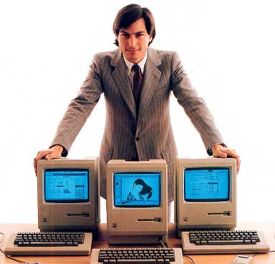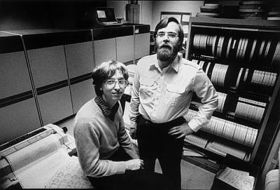Recall back in the early eighties when the Macintosh came out. It was the coolest computing device, with its then revolutionary point-and-click graphical user interface (GUI) and compact stylish exterior that could pass off as a trendy furniture piece in any artiste’s living room. Alongside it in what was then the Wild Wild West personal computing market were less sexy gadgets — the IBM PCs and its clones running the even unsexier Microsoft (MS) DOS which was later cloaked under a clunky GUI veneer, Windows.

Microsoft back then (as it does now) had free rein to license MS DOS and Windows to any hardware manufacturer — which brought on the Clone Wars: a raft of PC’s built around the same Intel microprocessors powering the IBM PC sold by every other outfit that could plug chips into a motherboard, all of which could run Microsoft products. IBM lost control over the very market in personal computing that it created even as MS DOS and Intel chips became the cornerstones of what was to become the global personal computing standard. Other dominant players of the era — Commodore, Atari, and Tandy — simply died out, their death knells heralding the coming of age of an entire industry.
| SUPPORT INDEPENDENT SOCIAL COMMENTARY! Subscribe to our Substack community GRP Insider to receive by email our in-depth free weekly newsletter. Subscribe to our Substack newsletter, GRP Insider! Learn more |

Apple’s Macintoshes and its closed platforms running Apple’s proprietary operating system (OS) managed to cling precariously to a 10% share of the market and its eclectic user base — artists, desktop publishers, educators, etc. Apple’s products appealed to cool while Microsoft’s products running on Intel machines (WinTel’s) sold on utility and were embraced by big corporate.
Fast forward to today. Apple is once again at the forefront of a gadgets revolution and at the cutting-edge of software design. The landscape looks familiar. Brilliant but proprietary software, Mac OS, iOS, and a portfolio of apps that are exclusive to Apple’s über-cool devices — iPhones, iPads, and the Macs.
But look what’s creeping up on all that once again — what is looking like a wave of open software platforms that could run on any device — Google and its Android operating system for mobile devices. There is also “The Cloud” (21st Century-speak for remote computing delivered to dumbed down terminals, which was as some of us recall, where it all started), and Open Source software (whose most famous products include Linux-based Ubuntu booting up on PCs within seconds and WordPress — the platform this site is running on). And Microsoft is still around. Still not cool, but wielding an all-too-familiar clout that simply cannot be written off even by the staunchest champions of tech “cool.”
Is it the 1980’s all over again? Interesting times ahead in the world of technology — as usual.
benign0 is the Webmaster of GetRealPhilippines.com.